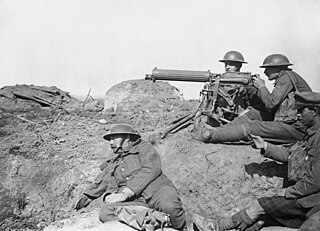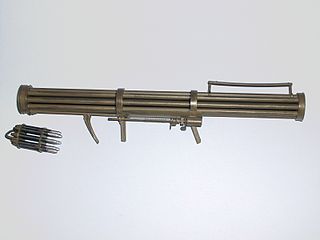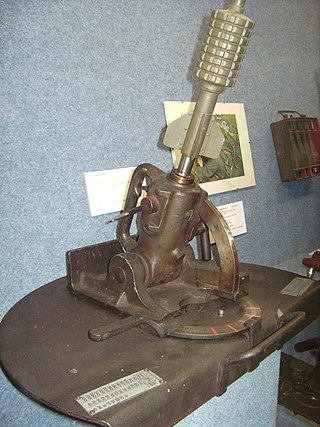Plot
The movie follows the life of an elderly man, David, who lives with his daughter-in-law, Maria, in their rural home by an unspecified body of water. Maria's husband, Andrei, is a soldier fighting in World War II, and it is shown that the two have not received any news from him in some time.
A German bomber plane flies over David and Maria's home daily and disrupts their livelihoods, having already killed their livestock and threatening to destroy their house. David attempts to bargain, even offering that Maria undress for the Germans in exchange for their house being left alone. These negotiations eventually fall through, and the man seeks help to destroy the plane. He manages to find and bring home a cannon but inadvertently launches the cannon's only projectile at the house, nearly causing it to collapse.
Maria takes to building a catapult (the titular wooden "cannon") to hit the plane's fuel tank with a rock launched as a projectile, thereby causing the plane to crash. This attempt also proves unsuccessful, with the catapult missing its target. Frustrated, David places several gas barrels inside the house and digs a trench surrounding it, filling it with gasoline. When the plane next flies over the house, David fires the gas inside the trench. The house, however, fails to explode. In a panic, David takes some burning hay and throws it inside the house, causing it to explode and destroy the plane. David, however, dies in the process.
The movie ends with a pregnant Maria rebuilding the house and tending to the land. Andrei is revealed to have died on the battlefield, and the narrator is revealed to be Maria's son.

Artillery are ranged weapons that launch munitions far beyond the range and power of infantry firearms. Early artillery development focused on the ability to breach defensive walls and fortifications during sieges, and led to heavy, fairly immobile siege engines. As technology improved, lighter, more mobile field artillery cannons developed for battlefield use. This development continues today; modern self-propelled artillery vehicles are highly mobile weapons of great versatility generally providing the largest share of an army's total firepower.

A catapult is a ballistic device used to launch a projectile a great distance without the aid of gunpowder or other propellants – particularly various types of ancient and medieval siege engines. A catapult uses the sudden release of stored potential energy to propel its payload. Most convert tension or torsion energy that was more slowly and manually built up within the device before release, via springs, bows, twisted rope, elastic, or any of numerous other materials and mechanisms.

A projectile is an object that is propelled by the application of an external force and then moves freely under the influence of gravity and air resistance. Although any objects in motion through space are projectiles, they are commonly found in warfare and sports.

Trench warfare is a type of land warfare using occupied lines largely comprising military trenches, in which combatants are well-protected from the enemy's small arms fire and are substantially sheltered from artillery. It became archetypically associated with World War I (1914–1918), when the Race to the Sea rapidly expanded trench use on the Western Front starting in September 1914.

Bosko the Doughboy is a one-reel 1931 short subject animated cartoon, part of the Bosko series. It was directed by Hugh Harman, and first released on October 17, 1931 as part of the Looney Tunes series from Harman-Ising Productions and distributed by Warner Bros.

A recoilless rifle (rifled), recoilless launcher (smoothbore), or simply recoilless gun, sometimes abbreviated to "RR" or "RCL" is a type of lightweight artillery system or man-portable launcher that is designed to eject some form of countermass such as propellant gas from the rear of the weapon at the moment of firing, creating forward thrust that counteracts most of the weapon's recoil. This allows for the elimination of much of the heavy and bulky recoil-counteracting equipment of a conventional cannon as well as a thinner-walled barrel, and thus the launch of a relatively large projectile from a platform that would not be capable of handling the weight or recoil of a conventional gun of the same size. Technically, only devices that use spin-stabilized projectiles fired from a rifled barrel are recoilless rifles, while smoothbore variants are recoilless guns. This distinction is often lost, and both are often called recoilless rifles.

An autocannon, automatic cannon or machine cannon is a fully automatic gun that is capable of rapid-firing large-caliber armour-piercing, explosive or incendiary shells, as opposed to the smaller-caliber kinetic projectiles (bullets) fired by a machine gun. Autocannons have a longer effective range and greater terminal performance than machine guns, due to the use of larger/heavier munitions, but are usually smaller than tank guns, howitzers, field guns, or other artillery. When used on its own, the word "autocannon" typically indicates a non-rotary weapon with a single barrel. When multiple rotating barrels are involved, such a weapon is referred to as a "rotary autocannon" or occasionally "rotary cannon", for short.

A mortar today is usually a simple, lightweight, man-portable, muzzle-loaded cannon, consisting of a smooth-bore metal tube fixed to a base plate with a lightweight bipod mount and a sight. Mortars are typically used as indirect fire weapons for close fire support with a variety of ammunition. Historically mortars were heavy siege artillery. Mortars launch explosive shells in high-arching ballistic trajectories.

Technology during World War I (1914–1918) reflected a trend toward industrialism and the application of mass-production methods to weapons and to the technology of warfare in general. This trend began at least fifty years prior to World War I during the American Civil War of 1861–1865, and continued through many smaller conflicts in which soldiers and strategists tested new weapons.

Early thermal weapons, which used heat or burning action to destroy or damage enemy personnel, fortifications or territories, were employed in warfare during the classical and medieval periods.

Ultimate Iron Man is the name of two comic book miniseries written by Orson Scott Card and published by Marvel Comics. The stories tell the origins of the Ultimate Marvel version of Iron Man, who appears in The Ultimates.
Lego Star Wars: Revenge of the Brick is a brickfilm loosely based on Star Wars: Episode III – Revenge of the Sith. Revenge of the Brick premiered on Cartoon Network on May 8, 2005, at 7:00 p.m. EST. The movie can now be seen in QuickTime format on the Lego website or directly downloaded. It was also released with the Clone Wars Volume Two DVD as one of its special features.

Tokio Jokio is a 1943 Looney Tunes propaganda short directed by Norman McCabe. The cartoon is notorious and controversial for its racist depictions of Japanese people. This is also noted for being the final Norman McCabe cartoon.

The Fliegerfaust, also known as the "Luftfaust", was a German prototype of a man-portable, multi-barreled, unguided rocket launcher, designed to destroy enemy ground attack planes.
The high–low system is a design of cannon and anti-tank warfare launcher using a smaller high-pressure chamber to store propellant. It allows a much larger projectile to be launched without the heavy equipment usually needed for large caliber weapons. When the propellant is ignited, the higher pressure gases are bled out through vents at reduced pressure to a much larger low pressure chamber to push a projectile forward. The high-low system allows the weight of the weapon and its ammunition to be reduced significantly. Production cost and time are drastically lower than for standard cannon or other small-arm weapon systems firing a projectile of the same size and weight. It has a far more efficient use of the propellant, unlike earlier recoilless weapons, where most of the propellant is expended to the rear of the weapon to counter the recoil of the projectile being fired.

Improvised artillery in the Syrian Civil War are improvised weapons created and used by factions of the Syrian Civil War, most notably Syrian opposition forces. The weapons include the Hell-Cannon and its variants, the Thunder Cannon and the Mortar Cannon.

C.A.T. Squad is a 1986 television film starring Joseph Cortese, Jack Youngblood, Steve James, Bradley Whitford, and Barry Corbin. It is directed by William Friedkin and written by Gerald Petievich, who had collaborated on To Live and Die in L.A. the previous year. The original score was composed by Ennio Morricone.

The Viven-Bessières rifle grenade, named after its inventors, also known as "VB grenade", and officially referred to as the "Viven-Bessières shell" in the French Army instruction manual, was an infantry weapon in use with the French Army from 1916 onwards.

The kleineGranatenwerfer 16 or Gr.W.16(Small Grenade Launcher Model 1916) in English, was an infantry mortar used by the Central Powers during the First World War. It was designed by a Hungarian priest named Father Vécer and was first used by the Austro-Hungarian Army in 1915. In Austro-Hungarian service, they received the nickname "Priesterwerfers". In 1916 Germany began producing a modified version under license for the Imperial German Army.

The Mortier de 58 T N°1 bis sometimes referred to as Lance Torpilles was an early French medium trench mortar. It was used by both the French Army and Italian Army during the First World War.

















